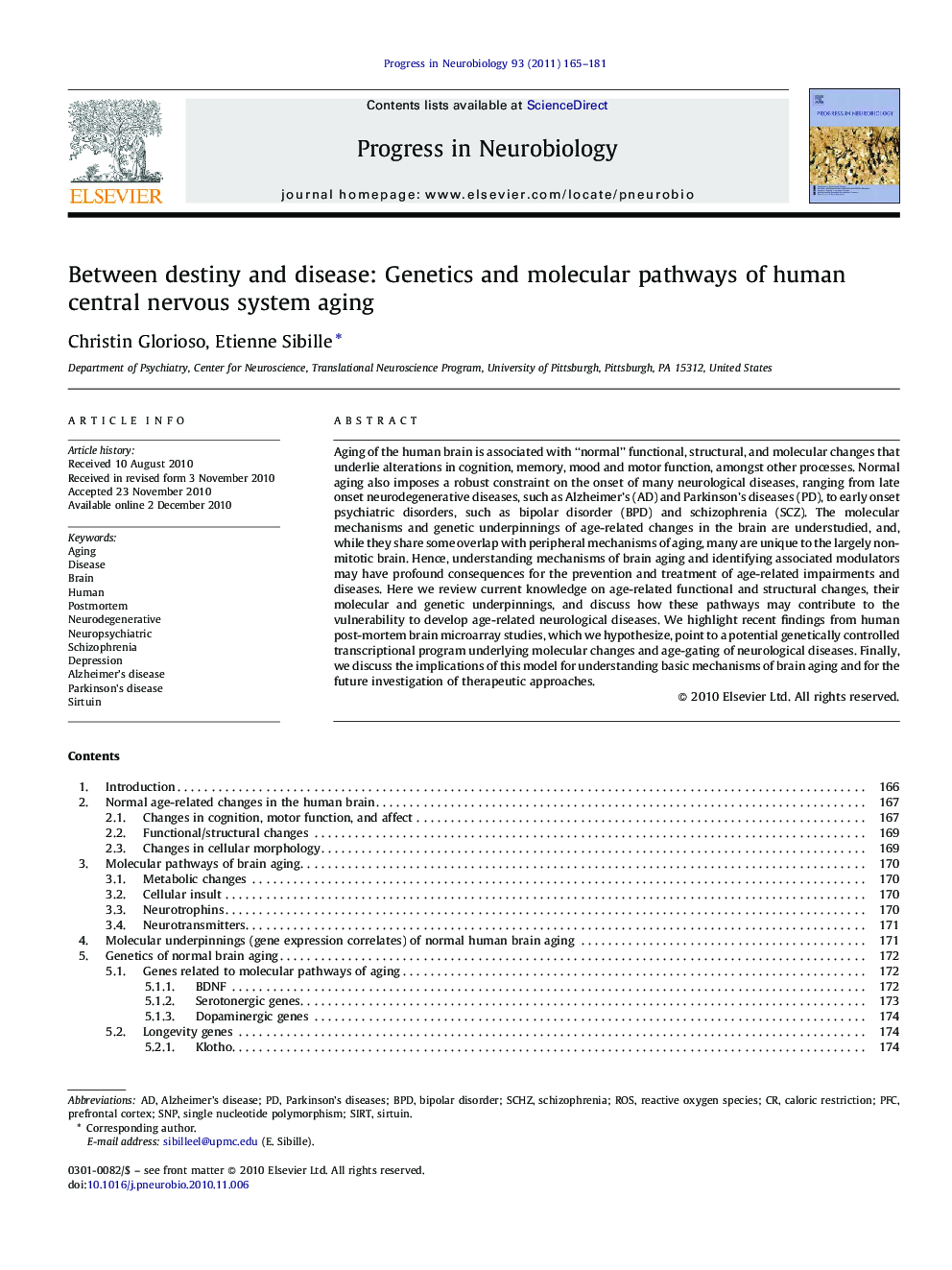| Article ID | Journal | Published Year | Pages | File Type |
|---|---|---|---|---|
| 6286608 | Progress in Neurobiology | 2011 | 17 Pages |
Aging of the human brain is associated with “normal” functional, structural, and molecular changes that underlie alterations in cognition, memory, mood and motor function, amongst other processes. Normal aging also imposes a robust constraint on the onset of many neurological diseases, ranging from late onset neurodegenerative diseases, such as Alzheimer's (AD) and Parkinson's diseases (PD), to early onset psychiatric disorders, such as bipolar disorder (BPD) and schizophrenia (SCZ). The molecular mechanisms and genetic underpinnings of age-related changes in the brain are understudied, and, while they share some overlap with peripheral mechanisms of aging, many are unique to the largely non-mitotic brain. Hence, understanding mechanisms of brain aging and identifying associated modulators may have profound consequences for the prevention and treatment of age-related impairments and diseases. Here we review current knowledge on age-related functional and structural changes, their molecular and genetic underpinnings, and discuss how these pathways may contribute to the vulnerability to develop age-related neurological diseases. We highlight recent findings from human post-mortem brain microarray studies, which we hypothesize, point to a potential genetically controlled transcriptional program underlying molecular changes and age-gating of neurological diseases. Finally, we discuss the implications of this model for understanding basic mechanisms of brain aging and for the future investigation of therapeutic approaches.
Research highlightsⶠMolecular mechanisms and genetic underpinnings of normal age-related brain changes share some overlap with peripheral mechanisms, but are also unique to the largely non-mitotic brain. ⶠOverview of age-related functional and structural changes, their molecular and genetic underpinnings. ⶠBrain molecular aging is remarkably conserved across cohorts and brain areas. ⶠNeurological disease pathways largely overlap with molecular aging. ⶠGenetic control of molecular aging: subjects carrying a low-expressing polymorphism in a putative longevity gene (Sirtuin5) have older brain molecular ages. ⶠMolecular aging and genetic/environmental influences suggest a putative “common mechanism” for age of onset across several neurological diseases. ⶠMolecular aging of the brain may contribute to age-related neurological disease vulnerability.
